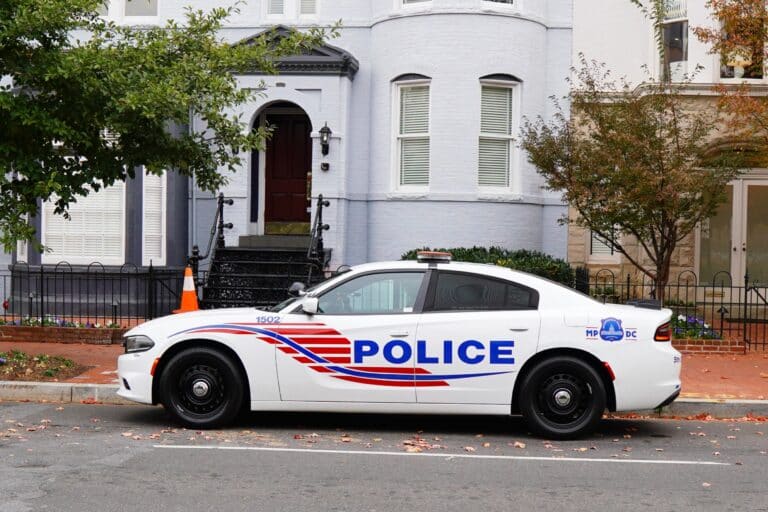Americans have yet to experience a mass shooting this year, and the overall murder rate has declined as well.
2024’s numbers represent the continuation of a positive downward trend in deadly violence that began in 2023. There has not been a mass shooting, defined by The Violence Project as four or more people killed in a single public incident unrelated to other criminal activity, since the Lewiston, Maine shooting in October–the only attack of that kind to happen after July 2023. Additionally, despite a historic drop in the murder rate last year, early 2024 has seen another 20 percent decline.
“[M]urder is down around 20 percent in 2024 in more than 180 cities with available data this year compared to a comparable timeframe last year (as of the moment of this piece’s publication),” Jeff Asher, a crime data analyst, wrote in a post examining early 2024 murder trends in the nation’s largest cities. “Murder is down 20.5 percent in 183 cities with available data through at least January, down 20.2 percent in 174 cities with data through at least February, and down 20.8 percent in 59 cities with data through at least March 20.”
The continued decline in the murder rate puts it closer to pre-pandemic levels, reversing the murder spike seen across the country from 2020 through 2022. The drop coming alongside a pause in mass shootings may provide some insight into whether the violent spectacles are at all correlated with the more common forms of deadly crime. However, the preliminary nature of the crime data and the unpredictable nature of mass shootings leave more questions than answers.
That is especially true since researchers have difficulty agreeing on what constitutes a “mass shooting.”
The Violence Project, created with a grant from the Department of Justice, derived its definition from the Congressional Research Service. It is an offshoot of the definition of mass murder. It captures the sort of attacks, where one person kills many people in public during a single incident without gang or other criminal motivations, that most often generate national news coverage.
But other trackers use looser definitions that capture far more shootings. The Gun Violence Archive, which many news outlets cite, considers any shooting where four or more people are injured, regardless of circumstances, to be a mass shooting.
The different definitions lead to wildly varying counts. While The Violence Project count tends to come in under ten per year, the Gun Violence Archive tends to capture upwards of 600.
Then there’s the count kept by the Associated Press and Northeastern University. They track any time four or more people are killed in any kind of incident with any kind of weapon. However, they also break out their count by other filters, including a public mass killing metric that tracks closely to The Violence Project’s definition.
However, regardless of which count you look at, mass shootings are down through the first several months of 2024.
“Mass shootings, defined as 4+ victims shot, are down from 165 last year at this time to 116 this year—a 30% decline,” Northeastern Professor James Allen Fox, who runs the AP/Northeastern database, told The Reload. “Mass shootings with 4+killed are down from 17 last year to 9 this year. And indeed no public mass shootings with 4+ killed.”
Experts who spoke with The Reload said the decline in the murder rate is likely a sign the pandemic-era spike was an anomaly. Dr. James Densley, Department Chair of Criminology and Criminal Justice at Metro State University, argued it was crime normalizing.
“What I suspect might be going on here is ‘reversion to the mean,’ which is basically the statistical way of saying, ‘what goes up, must come down.'” Densley told The Reload. “Homicides increased so dramatically in 2020 and 2021 that we may be experiencing a natural correction of sorts, aided in part by the vast amount of resources that have gone into violence prevention efforts in recent years. The data from 2022 and 2023 suggest homicide is now trending down overall, driven in part by massive declines in some major cities that pull down the national rate (e.g., Boston).”
Fox called the phenomenon “criminological gravity of sorts.”
“After surges in homicide and mass shootings in the past few years, I had expected some welcome downturn would emerge,” he said. “Newton never studied crime trends, but if he had, he would likely have said, ‘what goes up, must come down…eventually.'”
The reduction or downright absence of mass shootings, depending on the count, is less clear-cut.
Densley largely agreed with Fox that the two trends are connected. He argued the “decline in mass shootings is probably an extension of this wider trend, and hopefully it holds.” But he also noted it hadn’t been very long since the Maine mass shooting that took the lives of 18 people.
Jeff Asher told The Reload he was surprised to see the early data indicates a possible correlation between broader murder statistics and the rate of mass shootings.
“Mass shootings falling is really interesting because they weren’t falling last year despite shootings falling,” he said.
But he also cautioned that trends in mass shootings are more challenging to analyze because they are less frequent. Asher argued that was especially true of public incidents where four or more people are killed since there tend to only be a handful of those events each year. He argued “randomness could be responsible for any change from year to year” in those sorts of attacks.
The experts cautioned that the data is still preliminary, and the trends could reverse. The frequency of public mass shootings, in particular, has remained stubbornly stable since 2017, with 2020 being the lone year where the Violence Project didn’t record between 7 and 9 attacks.
“Whenever crime goes up or down it’s always difficult to say whether it is a blip or a trend until you can see the data down the line,” Densley said.
Still, there’s reason to hope America may have turned a corner. In his initial post, Asher noted that even if murders pick up a bit over the remaining eight months of 2024, the country would still end up in a much better place than it has been in recent years.
“A murder decline of even half the magnitude suggested by the early 2024 data would place the US murder rate this year largely on par with or below where it was from 2015 to 2019 prior to the surge in murder in 2020,” he said.




